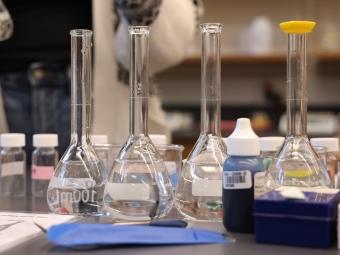Genomics
Genomics at Davidson
Genomics is the study of all the genes in an organism and how these genes work together to produce an organism and all its functions.
It is an umbrella term that encompasses many subdisciplines including bioinformatics, proteomics, glycomics, metabolomics, systems biology and synthetic biology. Genomics is a suite of methods and a perspective that will permeate all areas of medicine and biology for the next century.
The James G. Martin Genomics Program at Davidson introduces students to an interdisciplinary field that uses biology, chemistry, physics, mathematics, computer science and engineering. No one person can excel in all these areas, but we encourage students to be cross-trained in more than one area. You can incorporate genomics courses into any major or concentration to fulfill graduation requirements. Students majoring in a wide variety of areas such as English, economics, political science, physics, chemistry, or math have all thrived in the context of a liberal arts education with an emphasis on student-centered learning.
Genomics students get to pursue their diverse interests and are well prepared for success after Davidson.
Students learn to become independent scientists by conducting real research. Genomics students take ownership of synthetic biology projects that can be published in peer reviewed journals and presented at professional society meetings. The best way to learn science is to do science.

My Davidson | A Student Blog Not Just for Graduate Students: Summer Research on Hookah Smoking with Davidson College’s RISE Program
Jacquelline Nyakunu ’26 discusses her chemistry and biology research as part of RISE, an undergraduate research opportunity for Davidson College students.
